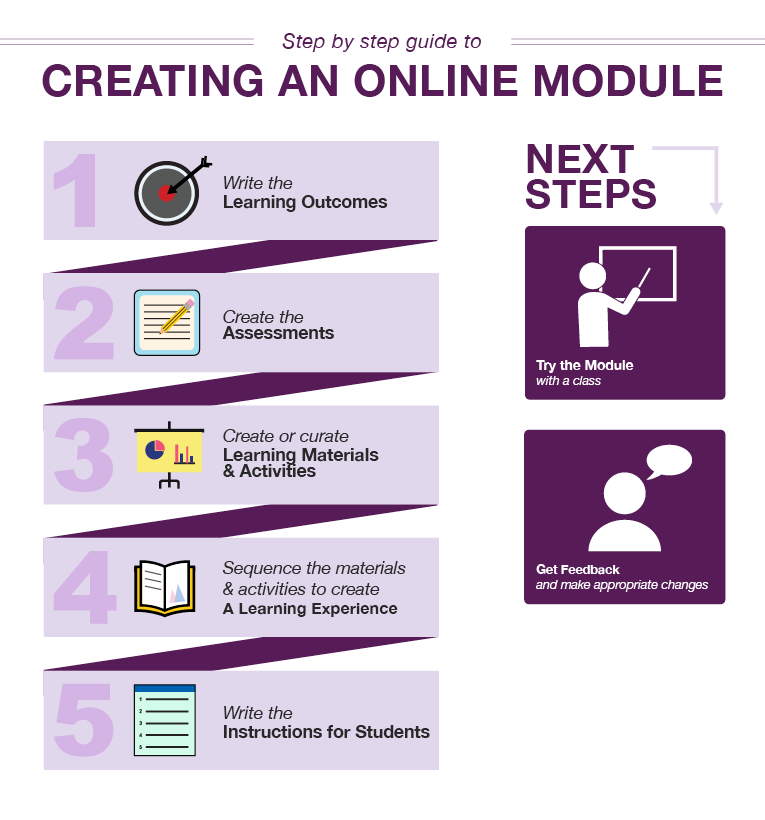
A learning module is a sequenced collection of
subject-related materials designed to teach a topic or skill. It is the
building block of an online course.
Online learning modules usually contain:
- learning objectives
- directions for use
- ways to help students understand or learn (i.e. learning materials)
- ways to help students practice or apply (i.e. learning activities)
- ways to ascertain whether students have understood or learned the material (i.e. assessments)
1. Write the learning outcomes
Start with the stem, “students will be able to…” and continue with action verbs describing behaviors that are observable and measurable. Write 2 – 4 learning outcomes. Consider using Bloom’s Taxonomy action verbs. Avoid using “understand” or “know” because they are not very concrete. Use other verbs such as “classify, describe, discuss, explain, identify, locate, recognize, report, select, translate, and paraphrase” instead.
2. Create the assessment/s
While it may seem counterintuitive to design assessments before the materials and activities, it is helpful to think about how you will find out that students have gained the knowledge and skills that you want them to learn as soon as you write the learning outcomes. Proceeding in this sequence helps keep the learning outcomes and student assessments aligned. Many times, learning materials and activities teach or practice more than the specific things we want to assess.
Consider including low stakes assessments that help students self-monitor their progress. Create rubrics if appropriate to guide your grading and help students understand in which aspects of the assignment they did well and in which aspects they can improve. Blackboard has a rubric tool that can facilitate grading and displaying graded assignments to students. Keep in mind that assessments can be placed in any part of a module; it doesn’t necessarily have to be at the end.
3. Create or curate learning materials and activities
Consider using a combination of resources that you curate and resources that you create. Students enjoy seeing materials created by their professors even if the materials are not as polished. Professor-created content helps make the course feel warmer and less “canned.” If you are asking students to read articles, review websites or view videos, give students guiding questions and specific instructions about what to focus on. Engage them in active learning by telling them what to look for, what questions to be asking themselves and what to be writing down as they go through the materials. If you are using a textbook, don’t forget to include the assigned readings from it.
4. Sequence learning materials and activities to create a learning experience
Put the materials and activities into a coherent sequence. Think about guiding students through them in a way that feels like a holistic learning experience rather than a series of discrete “things” to go through. Be explicit about how the learning material or activity will advance their learning of a skill or understanding of the topic.
5. Write instructions for students
Include steps, tips, and due dates. Add comments about how the content of this module connects with what students have learned before and what they will learn later. Write in short sentences and use bullet points and numbered lists. Ask a colleague or family member to look over your instructions to check for clarity and typos. Even though this is one of the first items that students see in the module, you want to write it last.



